at TA = 25°C and digipot outputs
unloaded (unless otherwise noted)
Figure 6-21 Integral
Linearity Error
vs Supply Voltage Figure 6-23 Total
Unadjusted Error
vs Supply Voltage Figure 6-25 Offset Error vs
Supply Voltage Figure 6-27 Full-Scale
Error vs Supply Voltage Figure 6-29 Supply Current
vs Digital Input Code 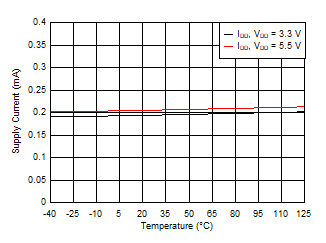
| Internal reference (gain =
4x), digipot at midscale |
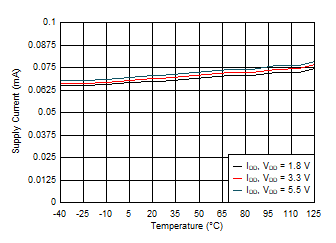
| Reference =
VDD, digipot powered down |
| Reference = VDD
= 5.5 V, digipot code transition from midscale to midscale + 1 LSB, digipot
load = 5 kΩ || 200 pF |
Figure 6-35 Glitch Impulse,
Rising Edge,
1-LSB Step
| Reference = VDD
= 5.5 V, digipot load = 5 kΩ || 200 pF |
Figure 6-37 Full-Scale
Settling Time, Rising EdgeFigure 6-39 Power-on
Glitch
| Reference = VDD
= 5.5 V, fast mode plus, digipot at midscale, digipot load = 5 kΩ || 200
pF |
Figure 6-41 Clock
FeedthroughFigure 6-43 Output Noise
Spectral Density
| Reference = VDD
= 5.5 V, digipot at midscale |
Figure 6-45 Digipot Output
Noise: 0.1 Hz to 10 HzFigure 6-22 Differential
Linearity Error
vs Supply Voltage Figure 6-24 Zero-Code Error
vs Supply Voltage Figure 6-26 Gain Error vs
Supply Voltage Figure 6-28 Supply Current
vs Digital Input Code 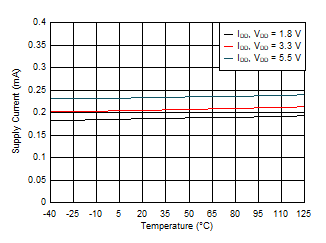
| Reference =
VDD, digipot at midscale |
Figure 6-32 Supply Current
vs Supply Voltage 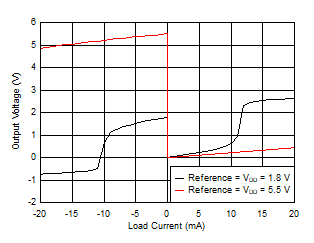 Figure 6-34 Source and Sink
Capability
Figure 6-34 Source and Sink
Capability
| Reference = VDD
= 5.5 V, digipot code transition from midscale to midscale – 1 LSB, digipot
load = 5 kΩ || 200 pF |
Figure 6-36 Glitch Impulse,
Falling Edge,
1-LSB Step
| Reference = VDD
= 5.5 V, digipot load = 5 kΩ || 200 pF |
Figure 6-38 Full-Scale
Settling Time, Falling EdgeFigure 6-40 Power-off
Glitch 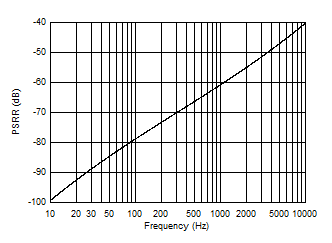
| Internal reference (gain =
4x), VDD = 5.25 V + 0.25 VPP, digipot at midscale,
digipot load = 5 kΩ || 200 pF |
Figure 6-42 Output AC PSRR
vs Frequency
| Internal reference (gain =
4x), VDD = 5.5 V |
Figure 6-44 Output Noise
Spectral Density
| Internal reference (gain =
4x), VDD = 5.5 V, digipot at midscale |
Figure 6-46 Digipot Output
Noise: 0.1 Hz to 10 Hz




